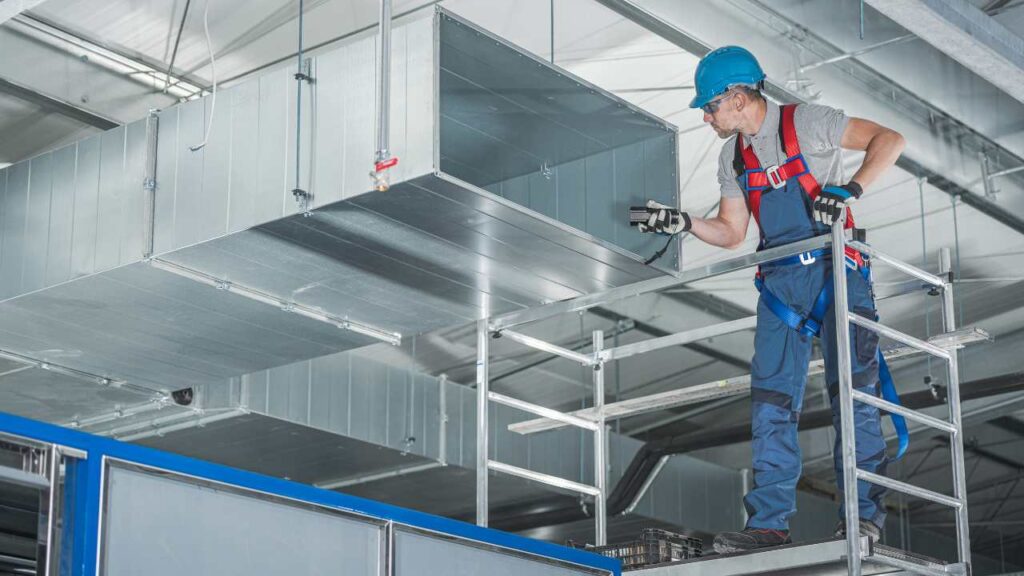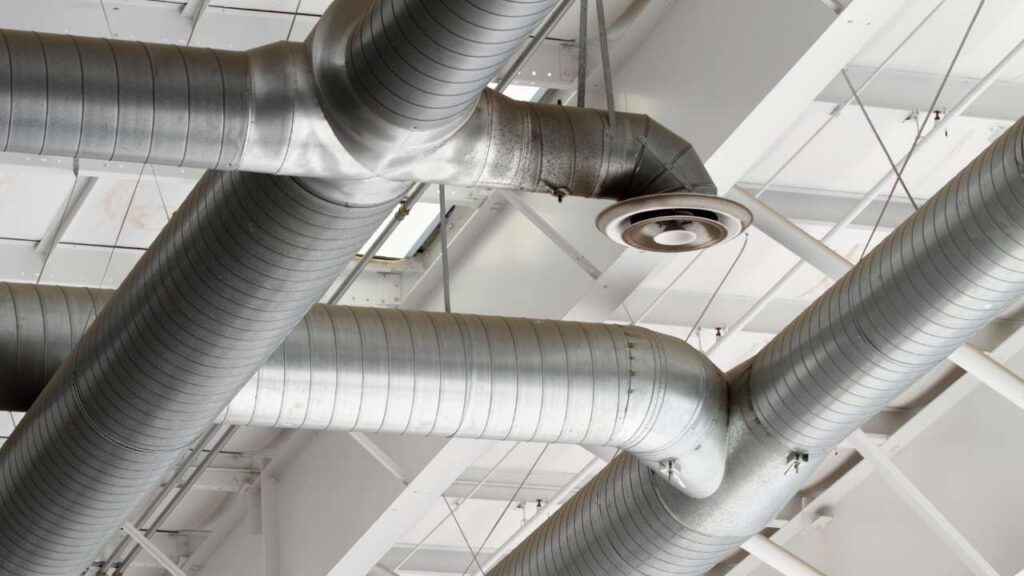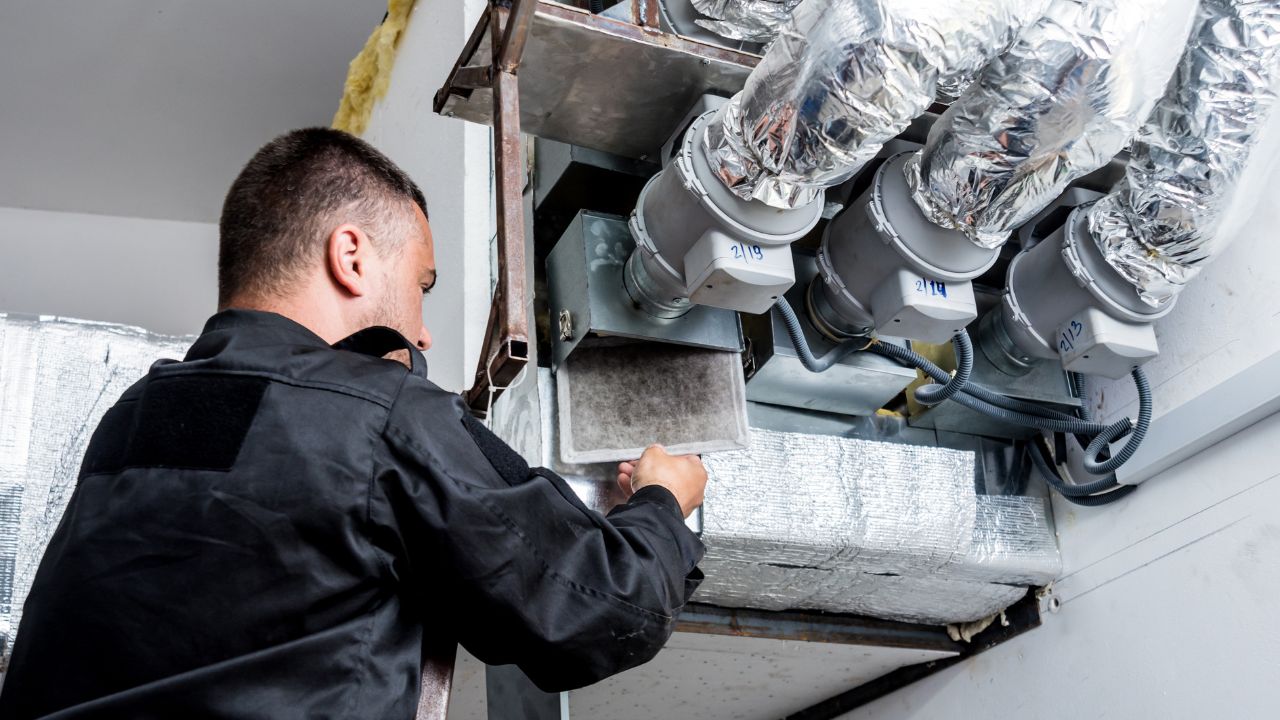Are you working on a small-scale housing project and concerned about maintaining healthy indoor air quality without sacrificing valuable space? In space-limited developments, proper ventilation is often an afterthought, yet it’s critical for preventing condensation, mould, and poor air circulation.
MVHR (Mechanical Ventilation with Heat Recovery) systems provide an energy-efficient way to ventilate small homes and apartments by recovering heat from stale air and using it to warm the fresh air coming in. These systems are ideal for developments where traditional ventilation methods simply won’t fit.
In this blog, we’ll explore creative MVHR solutions for space-constrained developments and offer expert tips for implementing the best solution.
What Is MVHR and Why Is It Important?
MVHR (Mechanical Ventilation with Heat Recovery) is an advanced system designed to extract stale, moisture-laden air from inside a property while also supplying it with fresh, filtered outdoor air.
Unlike traditional ventilation methods, MVHR includes a built-in heat exchanger that captures heat from the outgoing air and uses it to pre-warm the incoming air. This ensures minimal heat loss, making the system highly energy efficient while maintaining a comfortable indoor climate all year round. The importance of MVHR is especially clear in modern, airtight buildings where natural ventilation is insufficient.
Without proper airflow, indoor spaces can suffer from condensation, mould growth, and a build-up of pollutants. MVHR addresses these issues by providing consistent ventilation, improving indoor air quality, and helping to reduce heating bills in energy-conscious homes and developments.
Creative MVHR Solutions for Space-Constrained Developments
When traditional ventilation methods fall short due to limited room to work with, innovative MVHR designs can bridge the gap. The key lies in customising the solution to match both the physical and functional needs of the development.
Decentralised MVHR Units
Decentralised MVHR units are small-scale devices installed in individual rooms, avoiding the need for extensive ductwork. They are ideal for renovations or retrofits where space and access are limited. Each unit operates independently, supplying and extracting air within the same room, making them efficient and easy to install.

They offer flexible control for specific rooms and reduce installation time significantly. These units are particularly effective in student accommodations, bedsits, and older homes with no central service route.
Compact Ducted Systems
These systems use ultra-slim ducting and smaller MVHR units designed for minimal ceiling voids or service cavities. Despite their small size, they offer whole-home ventilation, often with smart zoning features for better airflow management.
Compact ducted systems are a popular choice in energy-efficient small apartments and new builds. This solution works well in new housing where compliance with energy standards is a top priority.
Ceiling-Mounted or Loft-Based Units
Installing MVHR units in ceiling voids or lofts helps preserve wall and floor space. These configurations are especially effective in upper-floor apartments or homes with unused attic areas.
Proper insulation and acoustic measures are important to ensure quiet, efficient operation in these elevated positions. It allows developers to achieve ventilation goals without altering floor plans or sacrificing living areas.
Single-Room Heat Recovery Fans
These fans are an excellent choice for isolated problem areas like bathrooms or kitchens. They provide filtered airflow with heat recovery without needing a central unit or extensive ductwork.
Simple to install and low maintenance, they offer a cost-effective entry point into MVHR systems for tight-space environments. They also improve air quality in key moisture-prone areas, which helps prevent mould growth.
Wall-Mounted Recessed Units
Wall-recessed MVHR units are designed to integrate directly into the wall structure, making them ideal for developments where floor and ceiling space are fully occupied.
They maintain high performance while blending discreetly into the interior layout, often installed in hallways or service zones. This option is well-suited to design-conscious builds where space use must be both functional and minimal.
Why Small Spaces Require Creative MVHR Solutions?
Designing effective ventilation systems in restricted environments comes with unique challenges. In such cases, traditional solutions often prove too bulky, making innovation essential for proper airflow and energy efficiency.

Limited Ceiling & Wall Cavity Availability
In many small developments, there is little to no room above ceilings or behind walls to run standard ducting. This makes it difficult to install conventional MVHR systems without major structural alterations. Developers must rely on slimmer components and more strategic layouts to avoid compromising the internal space.
Absence of Dedicated Service Areas
Unlike larger homes, small properties may not have a utility room or plant room where equipment can be housed. This forces designers to find alternate places such as kitchen cabinets or high-level cupboards for system placement. Clever positioning is key to maintaining access while preserving room usability.
Complex Retrofit Conditions
Retrofitting MVHR into existing buildings with tight layouts is especially challenging. Older homes may have low ceilings, thick walls, or lack ventilation infrastructure entirely. Creative solutions such as decentralised systems or surface-mounted ducts are often the only practical options in these cases.
Airtight Building Structures Increase Ventilation Demand
Smaller homes that are built or upgraded to be energy efficient often have very airtight building envelopes. While this reduces heat loss, it increases the need for mechanical ventilation. In these cases, customised MVHR systems ensure air remains fresh without breaching the property’s energy performance goals.
Conclusion
Creative MVHR solutions are essential for ensuring healthy, efficient ventilation in properties with limited space. Whether through decentralised units, compact ducted systems, or ceiling-mounted options, these systems overcome the challenges of restricted layouts while improving air quality and reducing heat loss. By choosing the right MVHR solution, you can future-proof your development, enhance indoor comfort, and meet energy performance goals without compromising on space.
If you are planning a small-scale project or upgrading an existing property, VentSolve is here to help. Our team specialises in designing and installing customised MVHR systems in Ireland. Contact VentSolve today to discover the right solution for your unique space.
Frequently Asked Questions
What is MVHR and how does it work in small homes?
MVHR (Mechanical Ventilation with Heat Recovery) extracts stale air from rooms like kitchens and bathrooms while bringing in fresh air from outside. A heat exchanger inside the unit transfers warmth from the outgoing air to the incoming air. In small homes, specially designed MVHR systems with compact ducting or decentralised units can provide the same benefits without needing large amounts of installation space.
Can MVHR be installed in apartments with limited ceiling height?
Yes, there are low-profile MVHR units and flexible ducting options specifically made for developments with limited headroom. Ceiling-mounted units or systems installed in service risers or kitchen cupboards are commonly used in apartments where vertical space is tight.
Is MVHR suitable for retrofit projects in older buildings?
Absolutely. While traditional systems might be challenging to retrofit, decentralised MVHR units or single-room heat recovery fans can be ideal for older buildings. These options require minimal structural work and still improve air quality significantly.
Does MVHR make a lot of noise in small rooms?
Modern MVHR systems are designed to be very quiet. With proper installation, acoustic ducting, and placement away from main living areas, they can operate silently in small spaces. Noise is usually only an issue if systems are poorly balanced or not maintained.
How often do MVHR systems need maintenance?
Basic maintenance involves replacing or cleaning the filters every 6 to 12 months, depending on usage and the environment. Annual inspections by a professional are also recommended to ensure optimal performance and indoor air quality.
Can MVHR systems help reduce mould and damp in small homes?
Yes. MVHR systems constantly extract moist air from wet rooms and introduce dry, filtered air, maintaining balanced humidity levels. This significantly reduces the risk of mould and condensation, especially in small, airtight homes.


